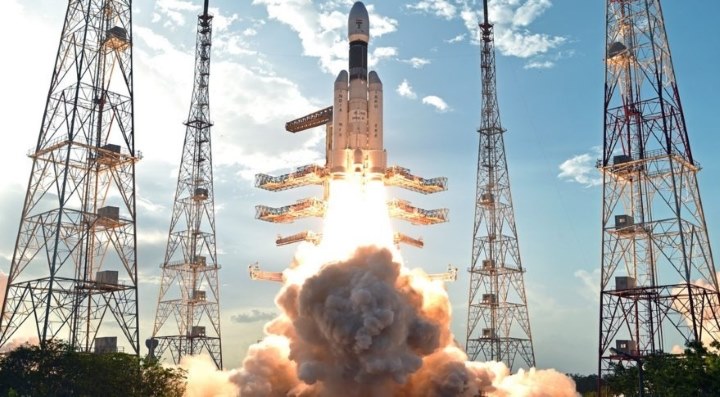

File photo of ISRO's GSLV rocket (Photo: IANS)
The countdown for the Monday morning flight of Geosynchronous Satellite Launch Vehicle (GSLV) rocket carrying India’s first second generation navigation satellite NVS-01 began at 7.12 a.m. on Sunday, said an official of Indian Space Research Organisation (ISRO).
Interestingly, for the first time, an indigenous rubidium atomic clock developed by ISRO’s Space Applications Centre (SAC), Ahmedabad will be flown in NVS-01.
Simply put, the NavIC an acronym for Navigation with Indian Constellation (formerly with a long winding name Indian Regional Navigation Satellite System IRNSS) is similar to the GPS (Global Positioning System) of the US, Glonass of Russia and Galileo of Europe as well as China’s Beidou.
A fully developed NavIC system consists of seven satellites in Geosynchronous/Inclined Geosynchronous orbits. It will provide real time positioning and timing services over India and a region extending approximately 1,500km around the Indian mainland.
According to the ISRO, the three staged 51.7-metre tall rocket GSLV-F12 with a lift off mass of 420 ton carrying 2,232 kg NVS-01 navigation satellite is scheduled to lift off at 10.42 a.m. on Monday from the second launch pad in Sriharikota rocket port in Andhra Pradesh.
About 19 minutes into the flight, the rocket will deliver the satellite into a Geosynchronous Transfer Orbit (GTO) from where it will be further taken up by firing the onboard motors.
ISRO said that NVS-01 is the first of the second-generation satellites envisaged for the navigation services.
The satellite with a mission life of 12 years is powered by two solar arrays capable of generating power upto 2.4kW and a lithium-ion battery during the eclipse.
NVS series of satellites will sustain and augment the NavIC with enhanced features.
This series has payloads that operate on L1, L5 and S bands thereby widening its services.
The L1 navigation band is popular for providing Position, Navigation and Timing (PNT) services for civilian users and for interoperability with other Global Navigation Satellite System (GNSS) signals.
Be that as it may, ISRO had used imported atomic clocks on all the nine navigation satellites it had launched earlier.
Each satellite had three atomic clocks.
It was said the NavIC satellites were performing well till the three clocks in IRNSS-1A — the first satellite — failed.
Sources in ISRO had earlier told IANS some of the atomic clocks were not functioning properly. The clocks are used for precise time and location.
Australia's High Commissioner to India, Philip Green OAM, called Yoga one of India's gifts to…
The Bharat Sanchar Nigam Limited (BSNL) has announced the soft launch of BSNL Quantum 5G…
The Indian Embassy in Iran has said that the embassy will make efforts to evacuate…
India's gross direct tax collections for the financial year 2025-26 rose by 4.86 per cent…
Russian President Vladimir Putin has said that Moscow is not seeking Ukraine's unconditional surrender, but…
Extending his greetings on the 11th International Day of Yoga, Lok Sabha speaker Om Birla…